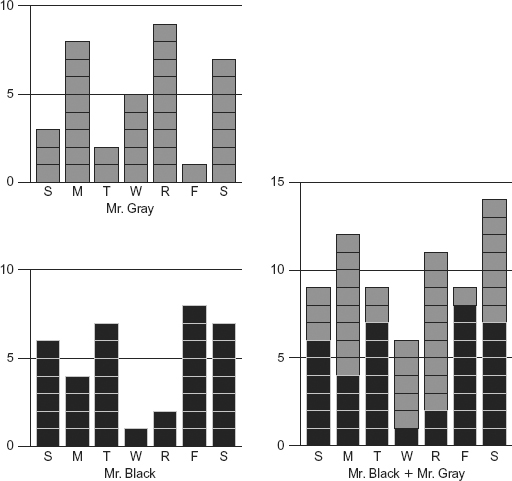Peak of the Sum Is Never Greater than the Sum of the Peaks
When we aggregate demands D1(t), D2(t), and so on, the aggregate demand will never be greater than the sum of its individual components: We will never have a situation where 1 plus 1 equals 3. In the worst case, where there are simultaneous peaks, the peak or maximum value of the sum will equal the sum of the peak values of each of the individual demands. However, if that doesn’t happen, the peak of the aggregate demand will be less than the sum of the peaks of the individual ones. In case this logic is a little tough to follow, let’s consider a simple example.
As seen in Exhibit 15.6, Mr. Gray and Ms. Black have varying demands through the week.
EXHIBIT 15.6 Sum of the Peaks Is Less than or Equal to the Peak of the Sum

For Mr. Gray, the peak occurs on Thursday, when he needs 9 resources. This leads to a peak demand for him of 9 and therefore a capacity requirement of 9. For Ms. Black, a peak occurs on Friday, when she needs 8 resources, leading to a capacity requirement of 8 resources for her. If we were to sum the demands via pooling resources and multiplexing resource requirements, we end up with the aggregate demand shown on the right of the exhibit. The peak of that aggregate demand is on Saturday, but the 14 resources required are less than the capacity of 17 resources—a max of 8 for Mr. Gray and a max of 9 for Ms. ...
Get Cloudonomics: The Business Value of Cloud Computing, + Website now with the O’Reilly learning platform.
O’Reilly members experience books, live events, courses curated by job role, and more from O’Reilly and nearly 200 top publishers.

